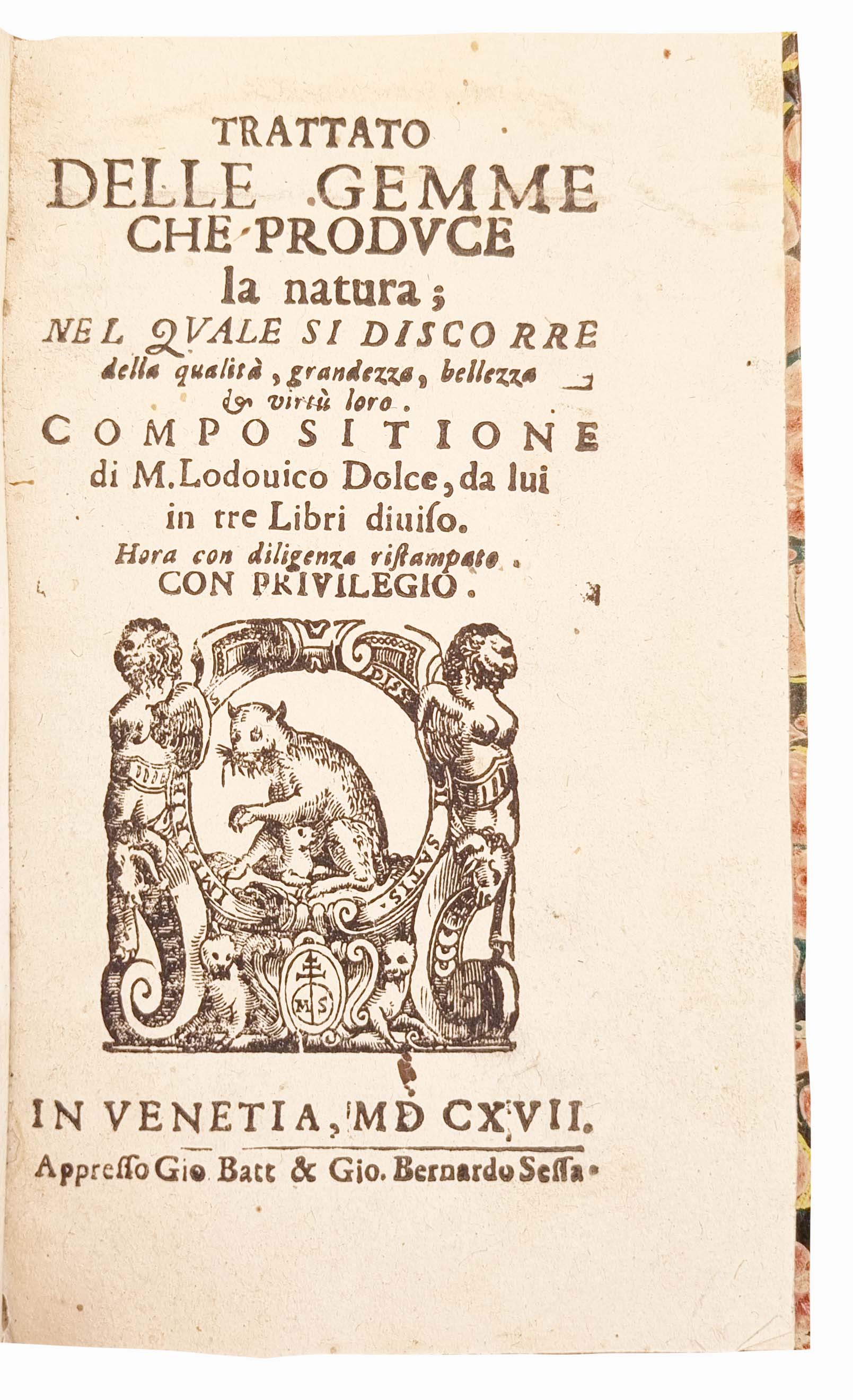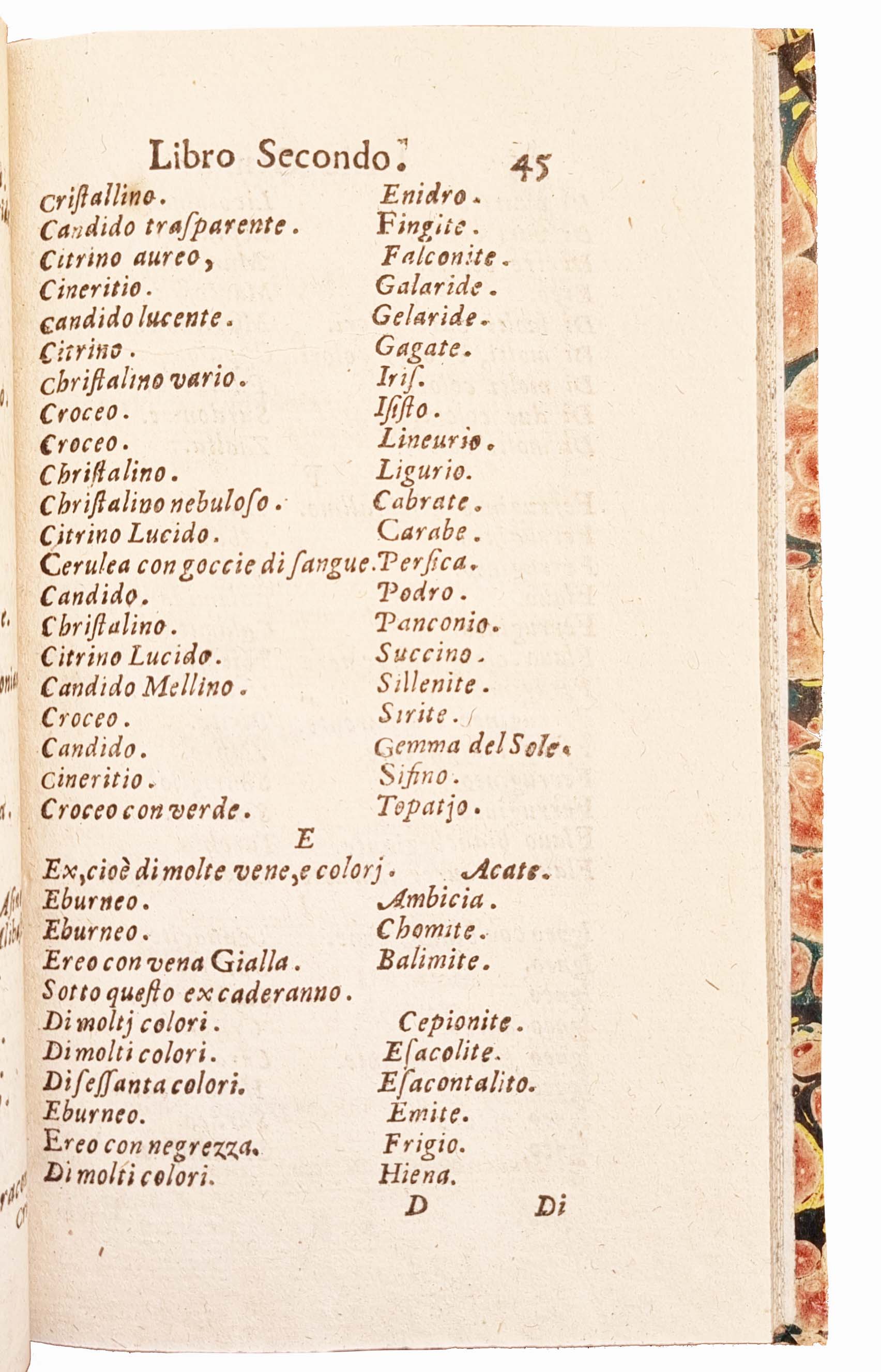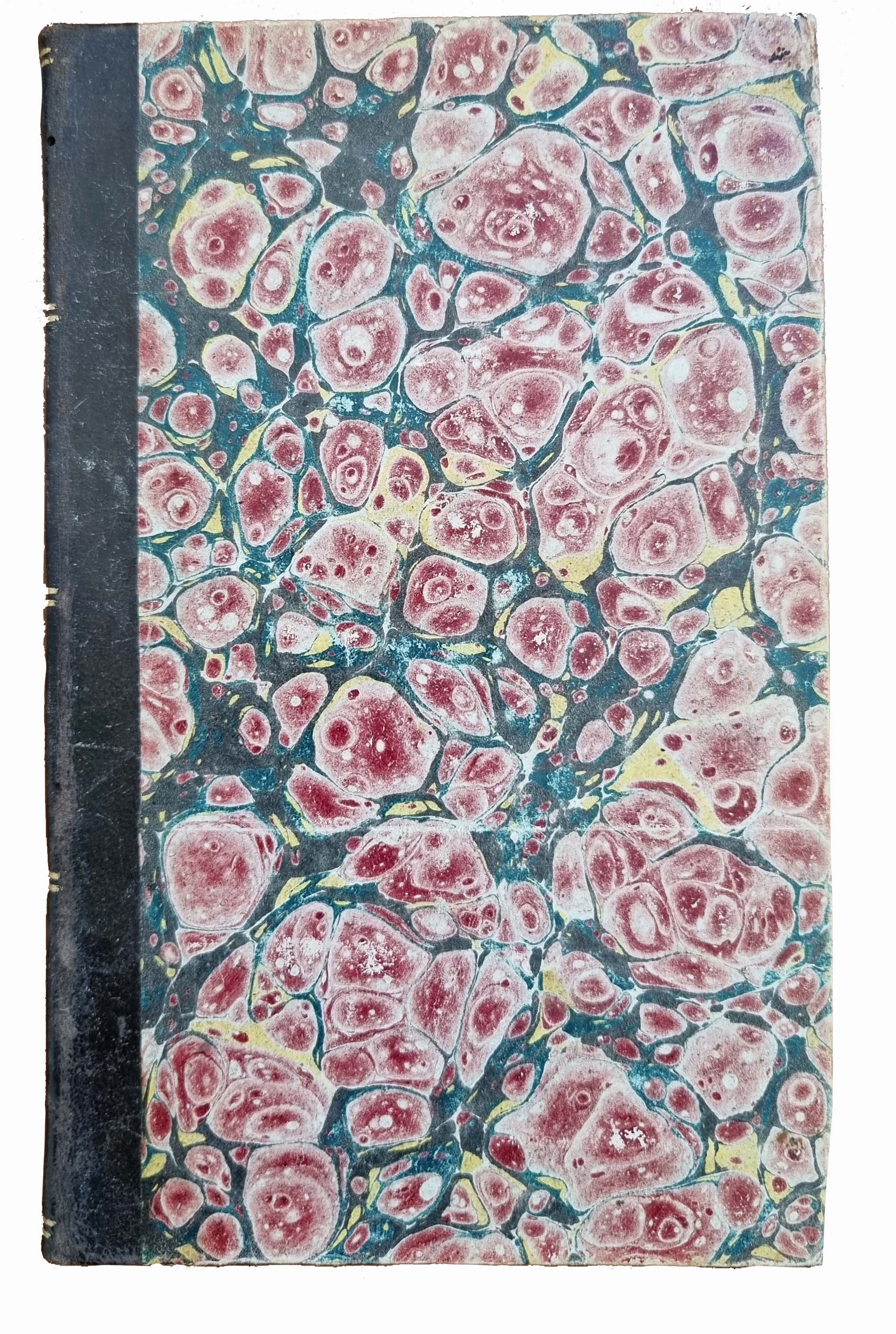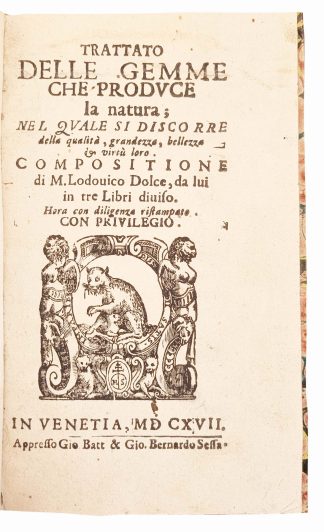DOLCE, Lodovico
MINERALOGY
Trattato delle gemme che produce la natura; nel quale di discorre della qualità, grandezza, bellezza et virtù loro.
Venice, Giovan Battista & Giovan Bernardo Sessa, 1617£2,500.00
8vo. pp. 188, (iv). Roman and Italic letter, printer’s woodcut device on title page, small floriated initials. Minor spotting, title page slightly soiled. A very good, crisp copy in 19th century ¼ calf, with marbled covers, title lettered in gilt on spine, a. e. sprinkled green, slightly wormed and rubbed.
A later issue of this important work on the virtues of precious stones by the prolific Venetian polygraph Lodovico Dolce (1508-1568). After completing his education, he worked with the press of Gabriele Giolito de’ Ferrari in Venice. He composed comedies, tragedies and verses on mythology, influenced by Virgil, Ovid and Catullus. He also had a keen interest in art criticism and wrote the dialogue entitled “Aretino ovvero Dialogo di pittura” (1557) on the comparison of poetry and painting, where he praised the artist Titian.
The present treatise is a translation of Camillo Leonardi from Pesaro’s “Speculum lapidum” (1547), and falls into the lapidary tradition discussing origin, appearance and powers of the gems. Precious stones and metals were considered valuable since ancient times but they were also attributed particular qualities. The first treatises on the artificial stones were composed towards the end of the Middle Age. After the dedicatory letter to Giovambattista Campeggio, comparing the virtues of the patron to rubies and other gems, the preface stresses the ancient interest of princes and aristocrats in the gems. There follow three books: book 1 describes physical features of the stones, and how they were created by the action of the natural elements; book 2 their properties and the influence they have on those who wear them. It ends up with an alphabet of the colours of the stones and an index containing names, etymology and species, as well as the place where they are located and the virtue of each gem. The author includes references to precious stones in public collections, particularly the Basilica of Saint Mark in Venice and buildings in Rome. Book 3 is dedicated to the images sculpted into the stones studied by the geomancy, to be interpreted with the support of astrology. Other treatises on the topic were published in the same years, such as Jean de la Taille’s Blason de pierres preciouses (1574) and Remy Belleau’s Le Amours et nouveaux eschanges des pierres preciouses (1576), however, as his authorities, Dolce mostly mentions only the philosophers Aristotle, Avicenna, Averroes and Albert the Great.
BL, 305. Gamba lists earlier editions (1565, p. 403: 1355). Not in Brunet or Graesse. Not in Fontanini.In stock





